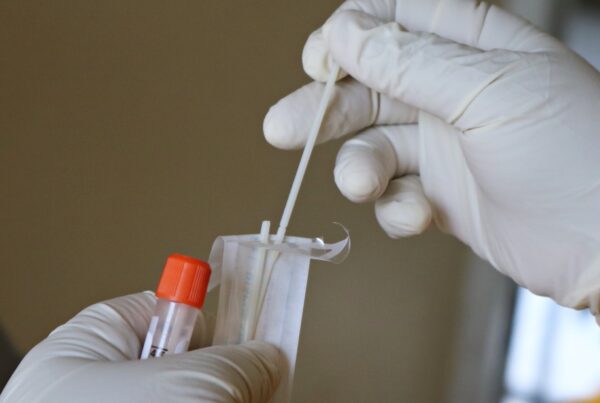Get Us PPE data used in President Biden’s COVID plan shows urgent PPE needs and is yet another indicator that the PPE crisis is not over.
The Big Picture
An update on the number of cases and deaths from the coronavirus: The United States has reached over 24 million cases of the coronavirus and 416,000 deaths. This past month has been one of the deadliest so far, with deaths and cases rising at rapid rates. North Dakota, South Dakota, and Utah top the list for highest case rates (cases per 100,000). However, California, Texas, and Florida have the highest number of total cases, with California just topping 3 million cases.
As the new administration takes over, President Biden painted a grim picture for the next few months. “We’re 400,000 dead expected to reach well over 600,000,” stated Biden, “there’s nothing we can do to change the trajectory of the pandemic in the next several months.” This comes as citizens all across the country become increasingly frustrated with the slow vaccine rollout.

Photo credit: DoD, U.S. Army Sgt. Charlotte Carulli via Wikimedia Commons
PPE and President Biden’s COVID Plan
President Biden recently introduced a comprehensive plan to tackle the COVID-19 pandemic, including specific actions to gain control of the PPE crisis. “PPE” was mentioned 50 times in the plan and is part of a larger movement to increase access to necessary medical supplies. “Ensuring the availability of COVID-19 related supplies is a critical component of the government’s COVID response plan and pandemic preparedness strategy…there are still hospital workers, doctors’ offices, and first responders, especially in disadvantaged and Tribal communities, that cannot get regular access to the equipment they need to protect themselves while they are helping others,” read the plan. The Biden team’s focus on vulnerable populations is an encouraging sign that non-hospital facilities, which make up 99% of Get Us PPE’s requests, will be provided greater access to life-saving equipment.
Biden plans to use the Defense Production Act to its fullest capacity to help solve the widespread weaknesses of the supply chain. The DPA will be used to increase quantities of tests, vaccines, PPE, and more. Biden plans to use the DPA to not only meet the current demand of PPE, but also increase stockpiles of PPE to lessen the impact of future shortages. Much of the PPE crisis has stemmed from the United States’ dependence on PPE produced in foreign countries. In an effort to strengthen the long-term efficiency of the supply chain, President Biden’s solution will “build toward a future, flexible supply chain and expand an American manufacturing capability where the United States is not dependent on other countries in a crisis.” Biden laid out a set of 4 essential steps to improve access to PPE:
- Improve supply chain surveillance and data systems and develop tools to better assess inventory and supply needs: create systems to efficiently communicate supply deficits, needs, and distribution information between all necessary parties to quickly respond to urgent needs for equipment
- Coordinate distribution to areas of need: work with governors and officials at local levels and improve upon existing distribution systems to quickly deliver supplies to communities that need it the most
- Provide adequate testing and PPE for all medical personnel, first responders, and essential government and private-sector service providers: focus on delivering PPE to high-risk populations and frontline workers in an effort to meet the single-use guidelines created by the National Institute for Occupational Safety and Health.
- Identify and take steps to limit price gouging and promote reasonable pricing: use executive action and power to limit price inflations and create a more equitable playing field for PPE purchases.
Get Us PPE data was used in the Biden COVID-19 response plan. The (updated) graph below, demonstrates urgent PPE needs, and is yet another indicator that the PPE crisis is not over.
The report noted that: “This map displays a breakdown by state showing where the 19,700+ PPE requests have come from since March 2020. Get Us PPE has received requests for PPE from all 50 states and some US territories.”
This Week at Get Us PPE
Poynter highlighted the most recent Get Us PPE Shortage Index when explaining the importance of using the Defense Production Act (DPA). With the shortage index demonstrating a growing need for PPE, the DPA has the potential to increase the supply of nitrile gloves, isolation gowns, N95 masks, and more.
STAT News outlined the 9 largest challenges President Biden will face when tackling this virus. “Improving a worn-down supply chain for just about everything” underscores the widespread harm poor management of our supply chain has caused. Citing Get Us PPE’s recent data that PPE requests rose 260% from November to December, STAT News emphasizes that the PPE crisis is not gone and is being perpetuated by the disorganized supply chains.
Dr. Shuhan He, co-founder of Get Us PPE, Dr. Megan Ranney, co-founder of Get Us PPE, and Ram Bala, board member of Get Us PPE, published an op-ed article in the Boston Globe regarding the equitable distribution of vaccines, and drawing comparisons to the PPE crisis. They argued that three fundamental improvements must be made to address the “structural inequalities” heightened by the vaccine distribution process:
- “Better data collection and visibility”: The needs of both hospitals and small non-hospital facilities must be considered to create a comprehensive picture of who needs vaccines, how many they need, and how they will be distributed.
- “High-quality allocation algorithms”: A variety of factors must be taken into consideration to create a fair algorithm that distributes vaccines to those at greatest risk first. Creating a “battle-ready” algorithm will help maximize “equity and efficiency.”
- “Creative solutions to last-mile logistics”: These vaccines need to constantly be moving to create an efficient distribution system. Current data indicates many shipments are getting stalled at “intermediate points”. A flexible but simultaneously coordinated system must be implemented to account the constant changes in case surges, death rates, etc. that may impact distribution systems.




